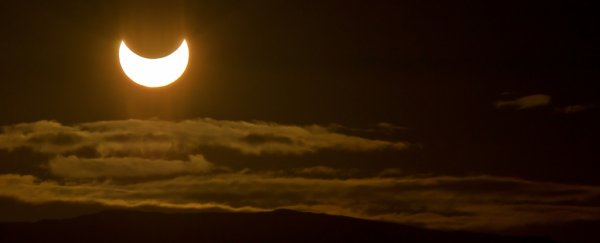We Earthlings are about to get a pretty cool celestial moment. A supermoon delivering a partial solar eclipse, falling on Friday the 13th - and all that for the first time since 1974.
The kicker? If you want to see it, you're going to have to be in the very southern tip of Australia, New Zealand, the southern Pacific Ocean, or the coast of Antarctica. Nice one, Solar System.
Solar eclipses aren't actually that rare - there are three this year, and there were two last year. This is because the Moon passes between the Earth and the Sun every 29 days. We call this phase, when the sunlit side of the Moon is facing away from Earth, the New Moon.
The alignment where Earth slips into the Moon's shadow occurs much less frequently than the New Moon, obviously. And we get excited about it because it's not always the same region - so different areas get to experience eclipses.
This week's eclipse will be a partial one - when the Moon slips past, only partially obscuring the Sun. Incidentally, that's just like the last eclipse to fall on a Friday the 13th, in December 1974. Except that one fell almost on the opposite side of the globe, landing on Baffin Island in Canada, just on the edge of the Arctic Circle.
Why is it a supermoon? The Moon doesn't move in a perfect circle around Earth, its orbit is more of an ellipse, or oval. At its farthest point - the apogee - it appears slightly smaller from Earth; at its closest point, or perigee, it appears slightly bigger.
This, too, happens roughly once every 28 days. But when the perigee happens during a New (completely dark) or Full (completely lit) Moon - bam, we get a supermoon.
 (F. Espenak/NASA GSFC)
(F. Espenak/NASA GSFC)
The eclipse will hit South Australia just after 03:00 am UTC, or 12.30 pm ACST. It will then move across Victoria at around 1:20 pm AEST. Then, it will hit the very tip of New Zealand sometime between 3:30 and 4 pm NZST.
Good luck!
